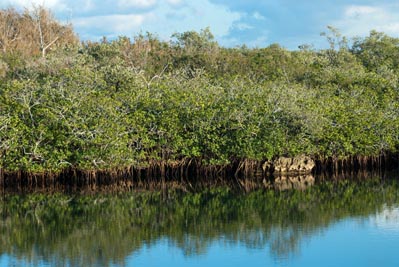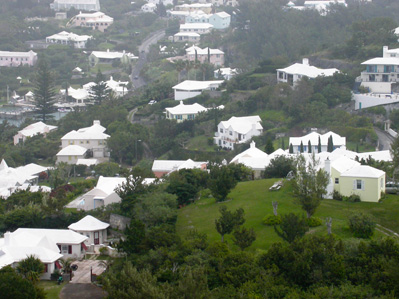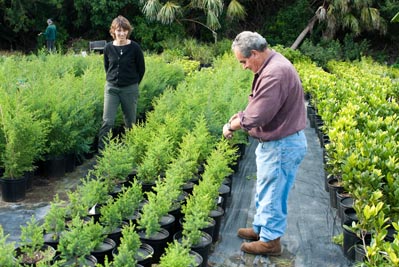


Thought to have been discovered by Juan de Bermudez in 1505, the fishhook shaped Bermuda Archipelago lies approximately 500 miles south east of Cape Hatteras in North Carolina, USA. The sub-tropical climate is maintained by the Gulf Stream and the Azores High. Bermuda is made up of over 100 islands, the seven largest of which are connected by bridges and causeways, but the Territory has a total land mass of just 54 Km². The islands sit on a thick (about 100 m) limestone cap which covers an undersea volcanic mountain, thus the soils are very porous.
Bermuda's native and endemic flora has originated from plant material transported by wind, sea and birds from mainland USA and the West Indies. Consequently, around 80% of Bermuda's native terrestrial flora can also be found in southern Florida and in the West Indies islands.


Bermuda cedar was the most heavily exploited species because of its attractive wood for furniture and ship building. Consequently commercial export was banned in 1657. This species suffered a further blow when the cedar scale (Carulaspis minima) was accidentally introduced to Bermuda in 1940-42 via importation of an ornamental species of juniper, resulting in 99% of the population being wiped out by 1971. The species is now making a very slow comeback thanks to propagation and replanting from resistant cedars.
Today, Bermuda's flora is under continued threat from development. 75% of Bermuda's land is developed, with over 10% of the landmass covered by buildings, roads and concrete. One of the most densely populated areas in the world, Bermuda's population in 2000 was 63, 000 people.This increasingly massive population on just 21 square miles of land is the cause of significant stress on the natural environment. This pressure increases with the huge numbers of tourists who visit Bermuda annually, which can be almost 10 times the resident population. With increasing threats to Bermuda's native flora it is extremely important to conserve and protect the remaining natural vegetation.

Please use the links below to see further details on conservation activities in the UK Overseas Territories.
British Indian Ocean Territory
South Georgia and the South Sandwich Islands
Sovereign Base Areas on Cyprus
Homepage of the UKOTs Online Herbarium





